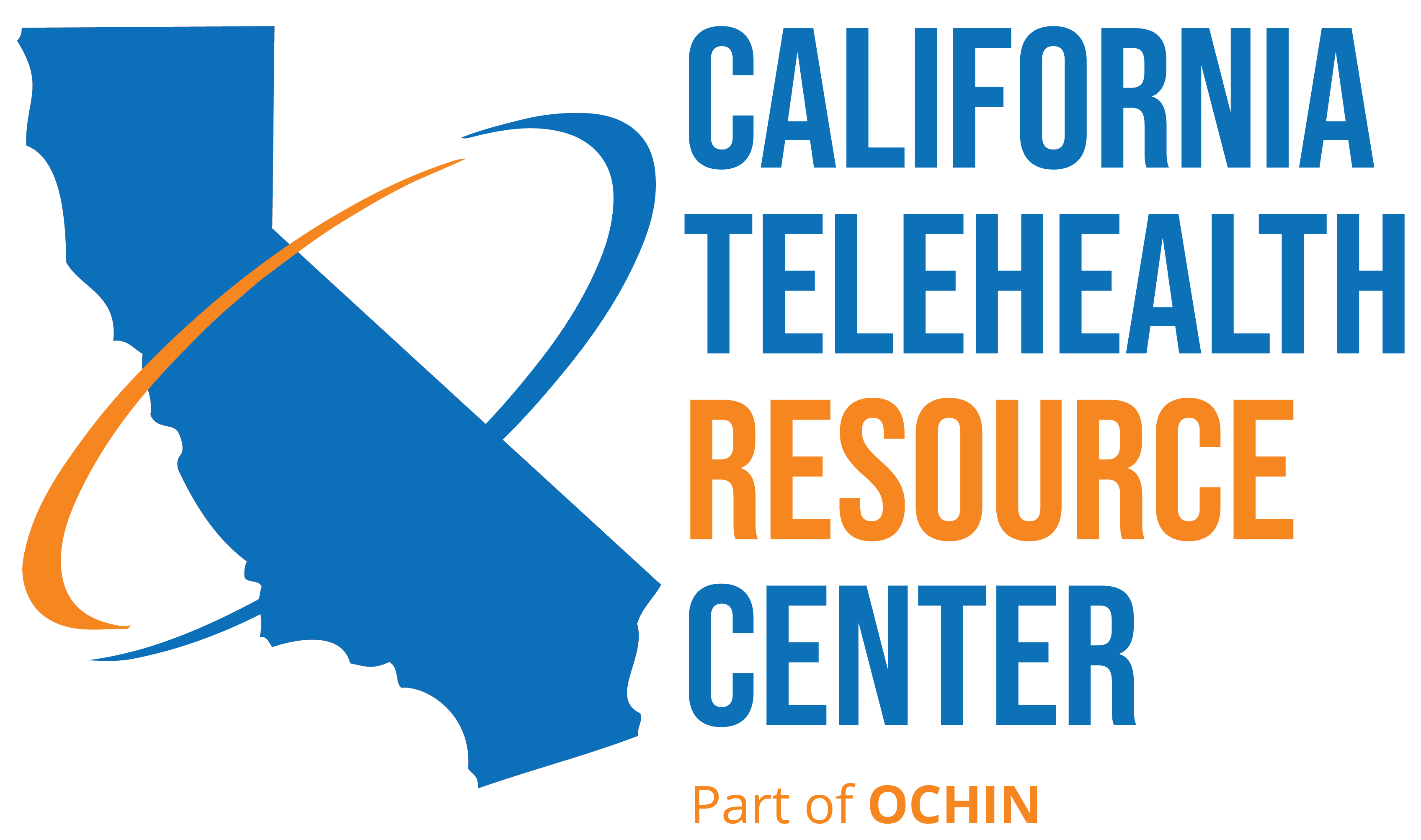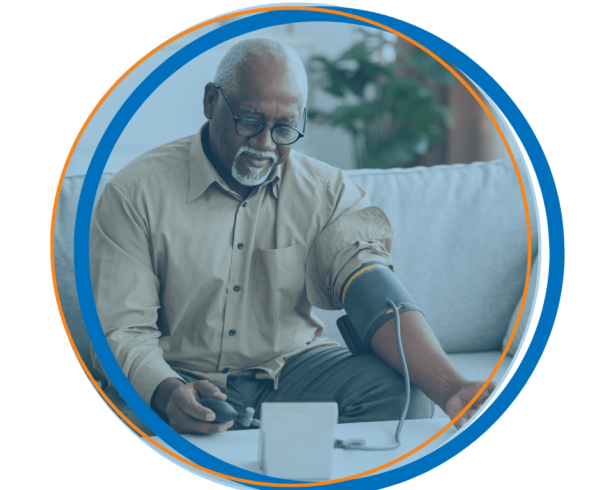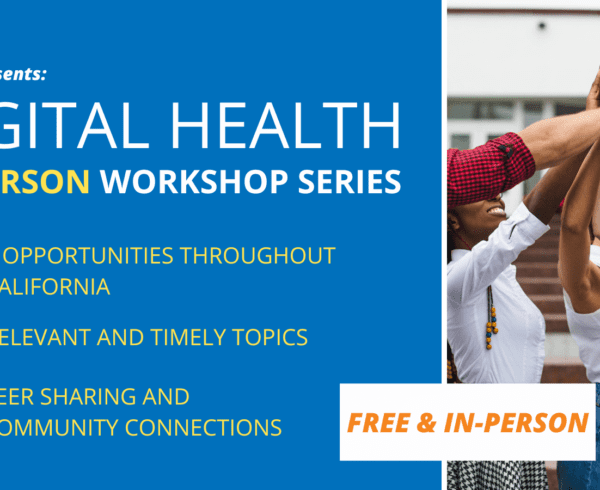Authored By: Crystal Baker, MPH Student
Crystal is an MPH student at Youngstown State University. She has experience working with various non-profit organizations, focusing on community health, advocacy, and program coordination. Her work often involves addressing social determinants of health and fostering collaboration to support health equity and access. As part of her capstone with CTRC, she is gathering data to develop prescriptive guidelines for providers on the role of digital health tools during disasters.
As climate change intensifies and the frequency of natural disasters increases, healthcare systems must overcome challenges brought forward by these issues. Digital health tools (DHT), including telehealth, artificial intelligence (AI), and remote monitoring technologies, can be vital in disaster preparedness, mitigation, and recovery. This blog post presents insights from an environmental scan that explores how these modalities can be effectively leveraged in disaster contexts.
Definitions of Various DHT Modalities
- Telehealth Live Video/Audio or Audio-Only Synchronous: Live, two-way interaction between a patient and provider using telecommunications technology. A provider uses telecommunications technology to meet with a patient who is in their home or other location to discuss and provide treatment. This is what most payers call “telehealth.”
- Asynchronous Store-and-Forward: Transmission of pre-recorded health history or images from a patient through an electronic communications system to a practitioner who uses the information to evaluate the case or render a service outside of real-time or live interaction.
- eConsult (Interprofessional Consultation): Transmission of pre-recorded health history from a primary care practitioner through an electronic communications system to a specialist who uses the information to evaluate the case or render a service outside of real-time or live interaction.
- Artificial Intelligence Enabled Health Care Modalities: These can be embedded in other modalities (like RTM/RPM/eConsult) or are a stand-alone modality that is assistive, augmentative, or autonomous.
- Remote Physiological Monitoring/Management (RPM): Use of digital technology to continuously collect and analyze patients’ physiological data. Providers monitor vital signs and other health metrics using software and devices such as wearables and mobile apps, enabling early detection of issues and timely interventions.
- Remote Therapeutic Monitoring/Management (RTM): Collection of personal health and medical data from an individual in one location via electronic communication technologies, transmitted to a provider in a different location. This data is used to monitor therapeutic responses and adherence, enabling timely adjustments to treatment plans and interventions.
- HIPAA-Compliant Texting: Secure transmission of encrypted health information between a patient and provider through a messaging system, allowing for the exchange of health information and treatment discussions while safeguarding patient privacy. (CTRC, 2024)
Disaster Applications
By integrating technologies like telehealth, AI, and store-and-forward systems, healthcare providers can offer immediate, life-saving interventions, maintain ongoing care, and enhance resource allocation. These tools improve response times, deliver critical care to underserved populations, and maintain continuity of care, even when healthcare infrastructure is compromised. In this section, we will explore the specific applications of telehealth, store-and-forward, and AI technologies during disasters, highlighting their uses during preparedness, mitigation, and recovery phases.
Telehealth:
- Mitigation: Telehealth can assist first responders in life-saving and damage-control interventions while prioritizing transports. (American College of Emergency Physicians, 2024).
- Recovery: Post-disaster, telehealth can support ongoing care for chronic conditions, mental health services, and follow-up care for injuries sustained during the disaster, especially in underserved or displaced populations (American College of Emergency Physicians, 2024).
Store-and-forward:
- Preparedness: Alerts and text messages can proactively remind patients to refill medications before a disaster occurs. Additionally, these alerts can be used to prepare patients for anticipated events, ensuring they take necessary precautions in advance (Healthcare Ready, n.d.).
- Mitigation: Factors that increased the likelihood of using eVisits, particularly messaging, during a disaster included prior use of the portal (13.7 times more likely), being 65 years or older (1.13 more likely), and having had an appointment within four weeks before the event (dependent on type of appointment) (Baek, 2021). Additionally, EConsults can be utilized to gain access to specialty doctors or increase workforce resources from other unaffected areas (Boyle, 2023).
- Recovery: Messaging can be used to reroute patients to clinics that are still operational and reschedule appointments (Baek, 2021)
AI:
- Preparedness: AI can be used for preparedness through improved training and simulation, as well as computer-aided diagnosis and decision analysis (Lokmic-Tomkins, 2023).
- Mitigation: AI can be used to predict disasters to deploy necessary responses to areas in need based on data, mitigating the exacerbation of issues (Banafa, 2023).
- Recovery: AI can play a crucial role in developing recovery plans that are both efficient and equitable. Additionally, chatbots can offer immediate, accessible support for basic healthcare and psychological needs during the recovery process, providing timely assistance to those affected by disasters (Enigma Advisory Disaster Recovery, 2024).
Challenges
Despite the potential of digital health technologies in disaster management, there can be several challenges. In this section, we will dive into these obstacles, highlighting the infrastructure, regulatory, and human factors that must be addressed to optimize the use of digital health tools in disaster scenarios.
Telehealth:
- Telehealth’s effectiveness during disasters can be hindered by infrastructure disruptions, such as damaged communication networks, power outages, and the displacement of populations to areas with limited connectivity (American College of Emergency Physicians, 2024).
- Telehealth can have limitations regarding to examinations, technical difficulties, security, and regulatory issues (Gajarawala, 2021).
Store-and-forward:
- Health Information Systems require certain infrastructure such as electricity or internet to access and maintain security, which can be a barrier during disasters (Lokmic-Tomkins, 2023).
- Barriers such as power outages, inadequate internet connectivity, and limited digital literacy significantly affected the utilization of digital health technologies, underscoring the importance of addressing these challenges to ensure effective deployment in disaster situations (Baek et al., 2021)
AI:
- There has been a slow adoption of AI compared to other digital health tools (Lokmic-Tomkins, 2023).
- AI in disaster management relies on a symbiotic relationship with human responders, requiring a careful balance between automation and human judgment (Enigma Advisory Disaster Recovery, 2024).
- There are risks as the systems are developed and adapted in healthcare systems, specifically in situations that have restrictive operating conditions such as natural disaster (Lokmic-Tomkins, 2023).
Less studied modalities and potential applications
Newer modalities like HIPAA-compliant texting, remote patient monitoring (RPM), and remote therapeutic monitoring (RTM) show promising applications in disaster contexts. Although these tools have been less researched, they hold significant potential for enhancing disaster efforts. This section will review these modalities, highlighting their potential uses in addressing healthcare challenges during disasters.
HIPAA-Compliant Texting:
- Preparation: Medication refill reminders, emergency alerts, and preparedness tips.
- Mitigation: Remote consultations, care guidance, and virtual follow-up coordination.
- Recovery: Updates on operational facilities, reopening plans, and post-disaster care instructions.
RPM:
- Preparation: Identification of patients that would be high-risk during the event of a disaster Continuous monitoring of vital signs in high-risk populations to detect early health issues before or during a disaster
- Mitigation: Tracking environmental factors like air quality and their impact on individuals with chronic conditions (e.g., asthma, COPD)
- Recovery: Continuation of care through monitoring key physiological metrics for patients recovering from disaster-related injuries or illnesses Remote monitoring to reduce hospital visits and ease strain on healthcare facilities
RTM:
- Preparation: Identify patients at risk of therapeutic non-adherence, ensuring they are supported before disasters strike
- Mitigation: Adjust therapeutic interventions for vulnerable populations in real time based on continuous data collection
- Recovery: Track therapeutic progress for post-disaster injuries or conditions (e.g., physical therapy for trauma patients). Remote supervision of rehabilitation exercises or therapies to maintain treatment plans despite disrupted in-person services.
DHT Stakeholders
DHT are influenced by various stakeholders that play crucial roles in their adoption, implementation, and regulation. Understanding these stakeholders is vital for addressing the challenges and maximizing the benefits of DHT in emergency situations.
- Centers for Medicare and Medicaid Services (CMS) play a pivotal role by establishing regulations and reimbursement policies that shape the adoption of DHT services. CMS sets guidelines for telehealth usage, ensuring that both patients and providers are aware of coverage rules, and facilitating broader access to healthcare. They are the single largest payor for health care services (CMS, 2024) and enroll about half of the US population (US GAO, 2022).
- Private Payors are key stakeholders that determine coverage for digital health services, often influenced by state and federal organizations. They assess the cost-effectiveness of digital health solutions and decide which modalities, such as eVisits or telehealth, will be reimbursed, which directly impacts patient access and provider use.
- Healthcare Providers/Organizations/Medical Groups as primary users of digital health tools, implement these modalities to maintain care delivery during disasters. They utilize DHT modalities for remote consultations, manage patient data through electronic health records (EHRs), and increasingly integrate AI for decision support in crisis situations. Providers must also comply with regulations on digital health, ensure data security, and work to bridge any access gaps within their communities.
Previous Applications
Historical disaster events have highlighted both the strengths and limitations of DHTs in ensuring continuity of care. This section explores previous disasters’ utilization of DHTs and the lessons learned from these applications.
- Hurricane Katrina: Store-and-forward modalities were essential for ensuring continuity of care for veterans, allowing for the preservation and transfer of medical information despite widespread disruption.
- COVID-19: The pandemic accelerated the use of electronic prescribing, leveraging DHTs to reduce in-person contact and ensure access to medications.
- Hurricane Sandy: Store-and-forward modalities helped limit the loss of medical records, contrasting the widespread destruction of paper records. However, the disaster also impacted approximately 25% of mobile phone towers, disrupting communication.
- Hurricanes Maria and Irma: These hurricanes devastated mobile networks, with 90% of mobile sites affected, severely hindering communication and access to digital health modalities.
- Australian Bushfires: Extreme heat and smoke from the bushfires caused failures in medical imaging equipment, including resonance imaging and computed tomography scanners in hospitals, highlighting vulnerabilities in health infrastructure.
Future Directions & Trends
As disasters become more frequent and severe, the modalities and challenges associated with DHT will continue to evolve. This section explores the critical directions and trends that must be addressed for the continued DHT’s growth and effectiveness.
Resilient Infrastructure
To ensure the resilience of digital health systems in the face of climate change and increasing natural disasters, it is essential to develop infrastructure that supports these technologies under extreme conditions. Stakeholders should focus on enhancing data security, improving interoperability among systems, and investing in training healthcare providers to use these tools effectively during crises (Lokmic-Tomkins, 2023). Satellites can restore and support connectivity and communication when infrastructure is damaged or over capacity. They can also be utilized to keep first-response efforts enabled by maintaining airports, shelter locations, healthcare facilities, and utility operations. They can also be used to supplement cell phone communications, which is not only useful for disaster response but also for individuals connecting with family, friends, and news updates (Viasat, 2023).
Standardization
Throughout the literature, there is a lack of standardized definitions and terminology for digital health modalities, creating inconsistencies and confusion. Major stakeholders like CMS, DHCS, and Medicare each use their variations of definitions, making it challenging to obtain clear and cohesive information. This lack of alignment hampers communication, implementation, and policy-making across the healthcare system.
Public Health Emergency (PHE) Waivers Unwinding
Due to the global pandemic, Medicare implemented temporary changes to expand access to telehealth services. These changes allowed patients to receive telehealth care from home, regardless of whether they lived in rural areas, and eliminated the requirement for patients to be physically present at a healthcare facility for telehealth visits. Additionally, certain types of visits could be conducted via audio-only communication. However, these flexibilities are set to expire after December 31, 2024, when the temporary measures will no longer be in effect (CMS, 2023)
This is important because as mentioned previously, Medicare is the single largest payor and influences the industry standards (CMS, 2024). Additionally, those who use telehealth the most are located in large metropolitan areas (USAFacts, 2023). This can lead to decreased access for patients and increase the gaps, especially for those struggling with challenges like transportation.
Full Environmental Scan Coming Soon
References
American College of Emergency Physicians. (2024). POLICY STATEMENT. Retrieved from https://www.acep.org/siteassets/new-pdfs/policy-statements/disaster-telehealth.pdf
American Medical Association. (2024, July 19). CPT appendix S: AI taxonomy for Medical Services & Procedures. https://www.ama-assn.org/practice-management/cpt/cpt-appendix-s-ai-taxonomy-medical-services-procedures
Baek, J., Simon-Friedt, B., Lopez, A., Kolman, J. M., Nicolas, J., Jones, S. L., Phillips, R. A., & Menser, T. (2021). Assessing Patient Needs During Natural Disasters: Mixed Methods Analysis of Portal Messages Sent During Hurricane Harvey. Journal of medical Internet research, 23(9), e31264. https://doi.org/10.2196/31264
Banafa, A. (2023, October 9). Artificial Intelligence and Natural Disasters. OpenMind. Retrieved from https://www.bbvaopenmind.com/en/technology/artificial-intelligence/artificial-intelligence-and-natural-disasters/Brotman, J. J., & Kotloff, R. M. (2021). Providing Outpatient Telehealth Services in the United States. Chest, 159(4), 1548–1558. https://doi.org/10.1016/j.chest.2020.11.020
Boyle, T. P., Boggs, K., Gao, J., McMahon, M., Bedenbaugh, R., Schmidt, L., Zachrison, K. S., Goralnick, E., Biddinger, P., & Camargo Jr, C. A. (2023). Hospital-level implementation barriers, facilitators, and willingness to use a new regional disaster teleconsultation system: Cross-sectional survey study. JMIR Public Health and Surveillance, 9, e44164. https://doi.org/10.2196/44164
California Telehealth Resource Center (CTRC). (2024). CTRC Digital Health Payment Guide -Interactive. https://caltrc.org/wp-content/uploads/2024/08/CTRC-DPG_Modalities-TH-Live-Video_240828.pdf
CMS. (2024, September 10). Payment | CMS. Www.cms.gov. https://www.cms.gov/cms-guide-medical-technology-companies-and-other-interested-parties/payment
CMS. (2023, February 27). CMS Waivers, Flexibilities, and the Transition Forward from the COVID-19 Public Health Emergency | CMS. Www.cms.gov. https://www.cms.gov/newsroom/fact-sheets/cms-waivers-flexibilities-and-transition-forward-covid-19-public-health-emergency
Enigma Advisory Disaster Recovery. (2024, April 16). How AI in Disaster Management Is Revolutionizing the Game. Enigma Advisory.
Forum on Medical and Public Health Preparedness for Catastrophic Events; Board on Health Sciences Policy; Board on Health Care Services; Institute of Medicine. (2014, August 27). The Impacts of the Affordable Care Act on Preparedness Resources and Programs: Workshop Summary. Washington, DC: National Academies Press (US). Retrieved from https://www.ncbi.nlm.nih.gov/books/NBK241387/
Gajarawala, S. N., & Pelkowski, J. N. (2021). Telehealth Benefits and Barriers. The Journal for Nurse Practitioners: JNP, 17(2), 218–221. https://doi.org/10.1016/j.nurpra.2020.09.013
Getachew, E., Adebeta, T., Muzazu, S. G. Y., Charlie, L., Said, B., Tesfahunei, H. A., Wanjiru, C. L., Acam, J., Kajogoo, V. D., Solomon, S., Atim, M. G., & Manyazewal, T. (2023). Digital health in the era of COVID-19: Reshaping the next generation of healthcare. Frontiers in public health, 11, 942703. https://doi.org/10.3389/fpubh.2023.942703
Healthcare Ready. (n.d.). What Does Telehealth Look Like? Retrieved from https://healthcareready.org/wp-content/uploads/2023/11/HCR_Telehealth_Brief_SCREEN_2.pdf
HHS. (2023, August 31). Telehealth policy changes after the COVID-19 public health emergency | Telehealth.HHS.gov. Telehealth.hhs.gov. https://telehealth.hhs.gov/providers/telehealth-policy/policy-changes-after-the-covid-19-public-health-emergency
Lokmic-Tomkins, Z., Bhandari, D., Bain, C., Borda, A., Kariotis, T. C., & Reser, D. (2023). Lessons Learned from Natural Disasters around Digital Health Technologies and Delivering Quality Healthcare. International Journal of Environmental Research and Public Health, 20(5), 4542. https://doi.org/10.3390/ijerph20054542
Murphy, J. (2024, February 23). RPM vs. RTM: What’s the Difference? Tenovi; Tenovi. https://www.tenovi.com/rpm-vs-rtm/#:~:text=Remote%20patient%20monitoring%20(RPM)%20differs
Shaver J. (2022). The State of Telehealth Before and After the COVID-19 Pandemic. Primary care, 49(4), 517–530. https://doi.org/10.1016/j.pop.2022.04.002
U.S. Government Accountability Office (GAO). (2022, September 29). Telehealth in the Pandemic—How Has It Changed Health Care Delivery in Medicaid and Medicare? Www.gao.gov. https://www.gao.gov/blog/telehealth-pandemic-how-has-it-changed-health-care-delivery-medicaid-and-medicare
USAFacts. (2023, November 22). What’s the state of telehealth after COVID-19? USAFacts. https://usafacts.org/articles/whats-the-state-of-telehealth-after-covid-19/#:~:text=Telehealth%20became%20more%20widely%20used
Viasat. (2023, August 31). How satellites play a role in disaster relief. Viasat.com. https://news.viasat.com/blog/corporate/how-satellites-play-a-role-in-disaster-relief#:~:text=Satellites%20enable%20communication%20during%20disasters







Leave a Comment